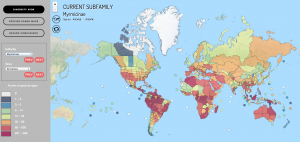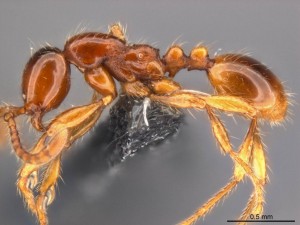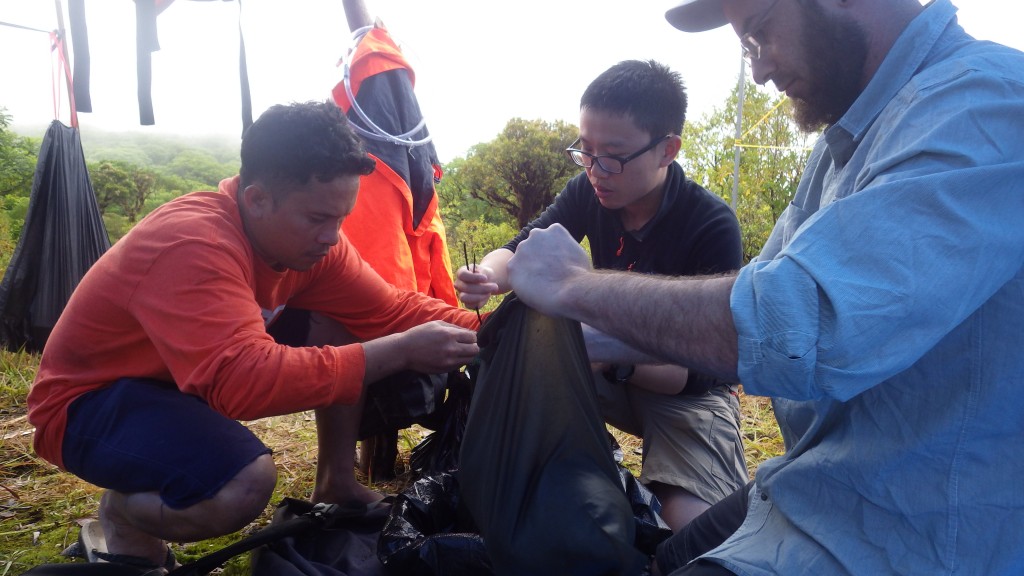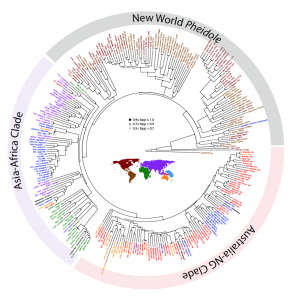A new species of Proceratium on Samoa, found and described by the very talented ant researcher Liu Cong.
Original publication can be found here
Biodiversity & Biocomplexity Unit, Okinawa Institute of Science & Technology Graduate University
A new species of Proceratium on Samoa, found and described by the very talented ant researcher Liu Cong.
Original publication can be found here
After months of development by Evan, Julia Janicki, Benoit Guenard, Nitish Narula, and Matt Ziegler, we are very pleased to introduce AntMaps.org ! AntMaps is an interactive web framework for mapping ant species ranges and aggregate biodiversity patterns. In particular, AntMaps is built to visualize and interact with the GABI database, currently consisting 1.6 million records of ant data. GABI is, to our knowledge, the first comprehensive global biodiversity dataset for any insect group. We hope that by providing a gateway to GABI, AntMaps will be an efficient and useful tool for amateur and professional myrmecologists, and also help us root out problems with the database. We’d love to hear your feedback.
! AntMaps is an interactive web framework for mapping ant species ranges and aggregate biodiversity patterns. In particular, AntMaps is built to visualize and interact with the GABI database, currently consisting 1.6 million records of ant data. GABI is, to our knowledge, the first comprehensive global biodiversity dataset for any insect group. We hope that by providing a gateway to GABI, AntMaps will be an efficient and useful tool for amateur and professional myrmecologists, and also help us root out problems with the database. We’d love to hear your feedback.
 Cong has two new papers out so far this year! The first paper describes a new species, Aenictus yangi in the Journal of Hymenoptera Research. The other paper, in Zookeys, reports new records of ant species encountered in Yunnan, China. Both papers are coming from the field expedition to the Xingshuabanna area that Cong, Benoit Guenard, and Benjamin Blanchard made recently. They found 25 species previously unrecorded in Yunnan in addition to many new species (including, of course, Bannapone). Nice work, Cong!
Cong has two new papers out so far this year! The first paper describes a new species, Aenictus yangi in the Journal of Hymenoptera Research. The other paper, in Zookeys, reports new records of ant species encountered in Yunnan, China. Both papers are coming from the field expedition to the Xingshuabanna area that Cong, Benoit Guenard, and Benjamin Blanchard made recently. They found 25 species previously unrecorded in Yunnan in addition to many new species (including, of course, Bannapone). Nice work, Cong!
In April, 2015, Eli and Cong made a two-week collecting trip to Samoa. One purpose was to look for two endemic species Pheidole aana and Pheidole atua, which was last collected in 1967 before this trip. They ended up finding Pheidole aana, along with four other endemic species among the 33 ant species collected during this trip. They also recorded two new genera from Samoa, Discothyrea and Proceratium. Moreover, they collected native forest species at an altitude as high as 1400 meters.


Very happy to report the new paper on Pheidole from the lab, in collaboration with Lacey Knowles’ lab at U. Mich. We update the global phylogeny to around 300 species, and find some interesting relationships between the phylogenetic and macroecological structure of the genus. Also check out the story on the OIST website. This one has been a long time coming and a lot of work. Look for more work and bigger trees on Pheidole coming soon. 